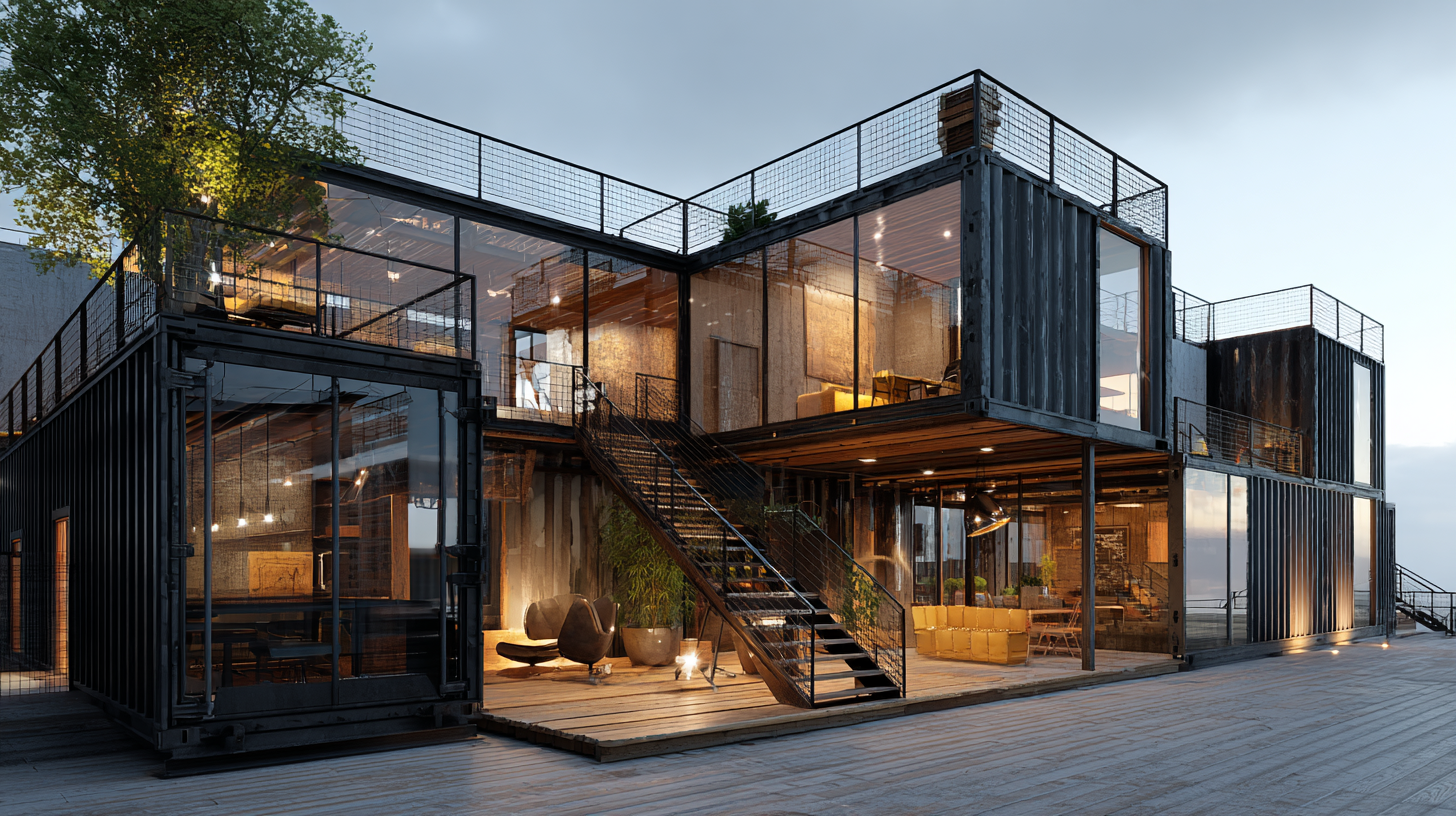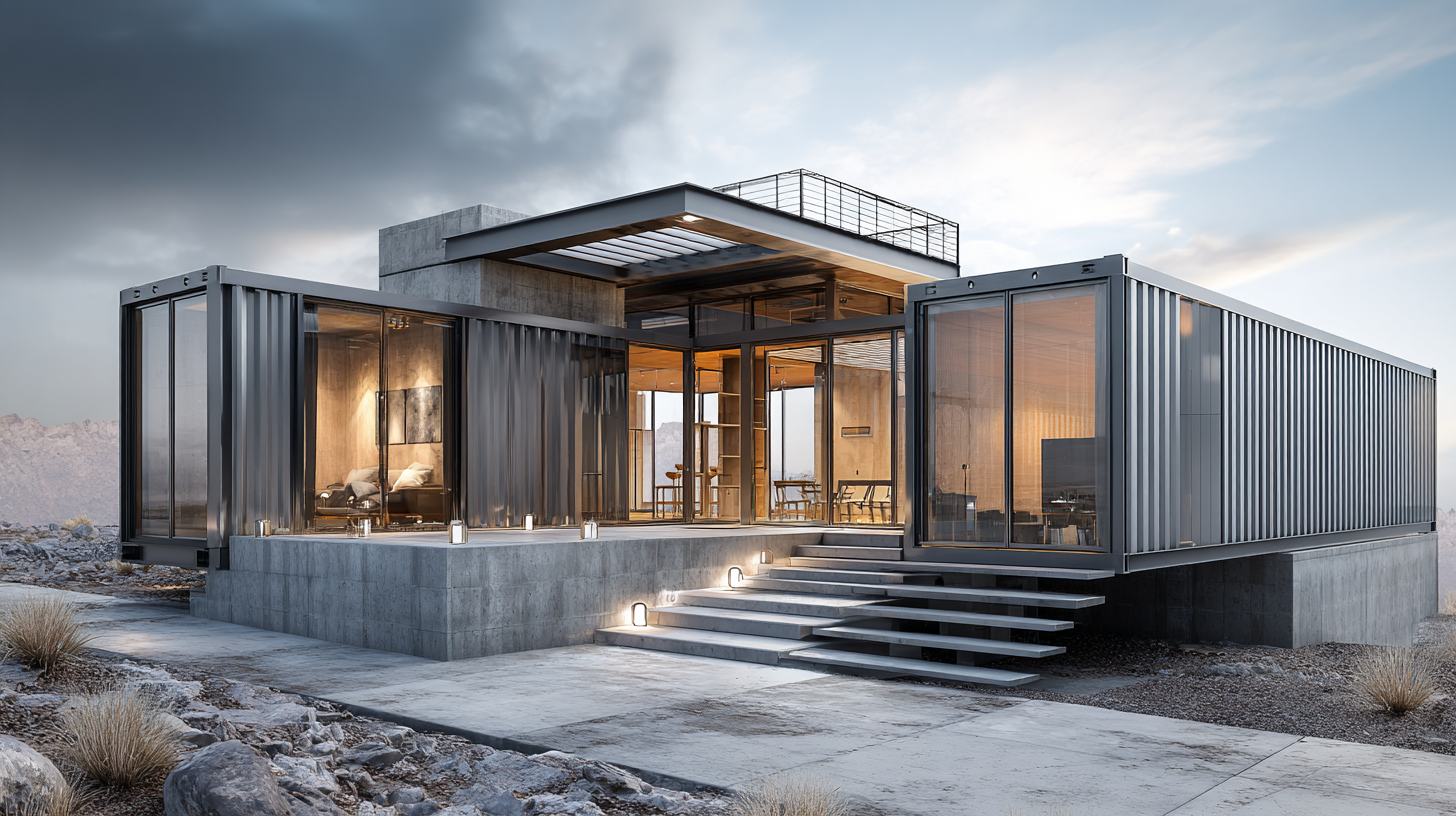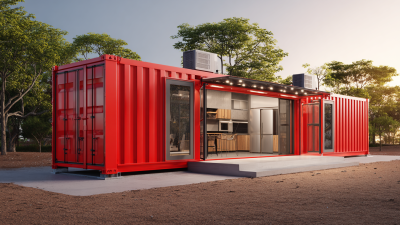Exploring Innovative Uses for Construction Containers in Modern Architecture
In recent years, the architectural landscape has been notably transformed by the innovative use of construction containers, a trend driven by the rising need for sustainable and cost-effective building solutions. According to a report by the International Council for Research and Innovation in Building and Construction (CIB), the global construction industry is projected to grow by over 70% by 2025, placing increased pressure on resources and environmental considerations. Construction containers, often seen as a resourceful alternative to traditional building materials, offer flexibility, durability, and lower carbon footprints while addressing urban housing shortages.

Furthermore, a study conducted by the Container Housing Association highlighted that using construction containers can reduce construction time by up to 50%, making them an appealing option for rapid development projects. As architects and developers continue to explore these innovative applications, construction containers are set to play a pivotal role in shaping the future of modern architecture.
Innovative Adaptations of Shipping Containers in Urban Design
In recent years, the integration of shipping containers into urban design has surged, reflecting a growing trend towards innovative architectural solutions that address space and sustainability challenges. Shipping containers, once merely a means of transport, have been repurposed into stylish homes, community hubs, and even mobile architectural projects. These adaptations not only offer an efficient use of materials but also foster a sense of adaptability in urban environments. For instance, firms have successfully developed insulated container homes in tropical climates, showcasing how local conditions can influence design innovations and enhance living standards.
Moreover, as cities evolve to tackle pressing issues such as climate change and housing shortages, temporary urban solutions utilizing shipping containers are proving to be invaluable. The pandemic has accelerated this shift in thinking, leading to creative interventions that prioritize flexibility and resilience in city planning. Projects like the world's first floating city in South Korea exemplify how innovative container designs can contribute to sustainable living while adapting to rising sea levels. As urban centers continue to grow and face unprecedented challenges, the innovative use of shipping containers stands out as a viable method for creating functional, versatile, and eco-friendly spaces within the ever-changing urban landscape.
Sustainable Architectural Solutions Using Recycled Containers
The growing emphasis on sustainability in modern architecture has led to the innovative use of recycled shipping containers as a viable building material. These containers are not only robust and cost-effective, but they also provide a unique aesthetic appeal that can enhance urban environments. By repurposing these structures, architects are able to minimize waste and reduce the carbon footprint associated with traditional construction methods. The modular nature of containers allows for flexible designs, making them ideal for various applications, from residential homes to commercial spaces.
Incorporating shipping containers into architectural projects fosters a dialogue about environmental responsibility and resource conservation. Many designers are experimenting with these containers to create energy-efficient buildings that utilize solar panels, rainwater harvesting systems, and green roofs. Such approaches demonstrate that innovative design does not have to compromise ecological integrity. By prioritizing sustainable practices, architects are not only defining the future of construction but also encouraging community engagement and awareness surrounding eco-friendly living.
Exploring Innovative Uses for Construction Containers in Modern Architecture - Sustainable Architectural Solutions Using Recycled Containers
| Project Name | Location | Container Uses | Sustainability Features | Completion Year |
|---|---|---|---|---|
| Urban Pop-Up Café | New York, USA | Café, Kitchen, Seating Area | Solar Panels, Rainwater Harvesting | 2022 |
| Coastal Housing Project | Gold Coast, Australia | Residential Units, Storage | Natural Ventilation, Insulated Walls | 2021 |
| Art Gallery Installation | Berlin, Germany | Gallery Space, Workshop | Recycled Materials, Green Roof | 2020 |
| Pop-Up Market | Tokyo, Japan | Market Stalls, Community Space | Low Energy Lighting, Modular Design | 2023 |
| Office Space Revamp | Toronto, Canada | Workstations, Meeting Rooms | LED Lighting, Energy-efficient Systems | 2024 |
Multifunctional Spaces: How Containers Enhance Modern Living
The rise of construction containers as a building material has revolutionized modern architecture, paving the way for multifunctional spaces that cater to diverse living needs. By repurposing shipping containers, architects and designers are creating innovative living environments that are not only sustainable but also highly adaptable. These versatile structures can be transformed into homes, offices, or community centers, allowing individuals and families to maximize their use of space while minimizing their environmental impact.
One of the most exciting aspects of container architecture is its ability to foster unique living experiences that are both functional and aesthetically pleasing. The modular nature of containers enables the creation of dynamic layouts that can easily be altered to accommodate changing lifestyles. For instance, an open-plan design can serve as a cozy family home during the day and transition into a vibrant gathering space for social events in the evening. With the addition of smart technology and eco-friendly features, containers are setting a new standard for modern living, blending comfort with efficiency in ways that traditional constructions often cannot match.

Case Studies: Successful Container Architecture Projects Worldwide
The use of construction containers in modern architecture has gained traction, giving rise to innovative design solutions across the globe. One prominent example is the Container City in London, which transformed disused shipping containers into vibrant, multifunctional spaces. This project showcases the versatility of containers, providing affordable housing and commercial spaces while fostering a sense of community. The strategic arrangement of the containers not only optimizes available space but also allows for creative personalization by the residents, making it a notable case of adaptive reuse.
Another inspiring project is the 100k House in the United States, designed by architect David Ma, which employs shipping containers to create energy-efficient, cost-effective homes. This design approach addresses housing shortages while prioritizing sustainability. The 100k House uses innovative insulation and solar power solutions, demonstrating how container architecture can effectively balance functionality and environmental consciousness. Such successful projects highlight the potential for shipping containers to redefine urban landscapes, offering new architectural possibilities while promoting sustainability and affordability.
Future Trends: The Role of Container Construction in Smart Cities
The integration of container construction within smart cities presents a future where urban landscapes are not only efficient but also sustainable. As cities increasingly leverage data and artificial intelligence to optimize their environments, construction containers can serve as flexible modules for diverse applications—from housing to workspaces. According to industry reports, the global market for modular construction is projected to reach approximately $157 billion by 2023, indicating a growing recognition of the benefits of this construction approach.
Tips: When considering container construction, it's essential to evaluate the local regulations concerning modular buildings. Engaging with local authorities early in the process can facilitate smoother project development.

Tips: To maximize the benefits of container construction, focus on selecting eco-friendly materials and technologies that facilitate energy efficiency. This not only supports sustainability goals but also often results in long-term cost savings.
Related Posts
-

The Ultimate Guide to Choosing the Right Movers Containers for Your Next Move
-

Exploring the Versatility of Storage Shipping Containers for Home and Business Solutions
-

The Rise of Construction Containers Revolutionizing the Building Industry Amidst Sustainability Demands
-

Transform Your Space: Innovative Uses for Storage Shipping Containers in Urban Living
